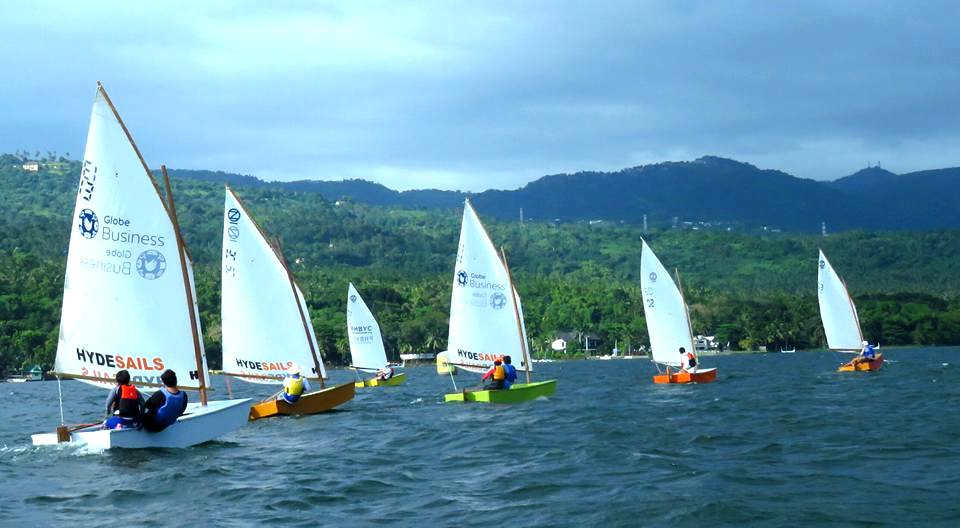From the OzRacer Archive.
The hullweight restrictions on the OZRacer
This was in the context of the days when the OzRacer was part of the PDRacer. Our idea was to design the best boat we could and then restrict it tightly within its own rules (must use a polytarp sail, plywood only, minimum weight requirement etc) rather than allow the open to everything aspect of the PDRacers – which has its strengths and weaknesses.
There was been a![]() great discussion about hull lightness/strength.
great discussion about hull lightness/strength.
Compared to Australian racing dinghies our “lightweight” OzRacer is very conservative at around 54lbs as a bare hull – no paint – no fittings. We are setting a sensible weight for a durable trouble free boat that can still be lifted by a couple of kids. We are finalising the allowable minimum weight and it will be published on the RULES PAGE.
Within the framework of the international rules you can build a boat as light as you like. But for the OZ PD Racer we decided to have a restriction to keep the boats really simple to build out of standard materials.
So if you build one lighter than our rules allow you can race in Open PD Racer events and even compete internationally.
But what are the limits of wood technology – how light is POSSIBLE?
Also see the EPOXY and Boatbuilding FAQ for more detailed info on building methods and materials that make the OZRacers possible – also good info there if you are actually building any boat.
As an example, the most radical class in Australia in terms of wooden structures was the International Moth.
![]()
Moths have now gone to a pointy ended hull, but for a long time they were a scow hullform as above.
![]()
The Moth has no minimum hull weight requirement – so every new boat made an attempt to improve the lightness of the structure.
The boats were almost all owner built and typical scantlings were Hull and internal web frames (except for cockpit) 0.7mm birch aircraft ply – which translates to about 1/32″
The cockpit had to be a bit thicker – they used 1.2mm (1/12″) with 0.75oz fibreglass on the underside.
Hull weights were around the 32 to 35 lb mark for the highly stressed structure.
Boats were of top rank competitiveness for about 2 to 3 years then would be sold on to an intermediate level sailor who would use them for another 2 to 3 years. There were no visible wracking (wringing) deflections in the hulls despite loads in the windward sidestay of around 1000lbs (wires used to break very occasionally!)
Now they are all narrow skiff shaped hulls made of carbon/foam with hullweights around the 15lb mark and have sprouted hydrofoils.
Because of this rather Australian Tendency to get away with whatever we can get away with we are going to put a minimum hull weight restriction on local boats. Lighweight timber structures are too well known among the boating community and if there was complete freedom there would be a flock of 10″ thick puddleducks that weighed in around the 22 lb mark (they are 2/3 the length of moths, thus 2/3 the weight is not unreasonable).
In fact the upper Moth pictured above becomes rather a good prototype for the ultimate puddle duck racer – all proven technology – the timber hull, the wings, the alloy mast – all quite cheap – except for the sail.
Is the OzRacer a Planing boat?
And no-one tell me that the Oz is a displacement boat and that will limit the speed. My first boat was a Northbridge Junior – a 8ft version of the Moth without the wings and similar bottom rocker to the Oz. Me and a friend used to spend hours planing backward and forward in front of the sailing club whenever the wind was up – spray everywhere.
![]()
The only reason the Oz have not planed is most of them have been built too heavily and there has been an acceptance of the statement “they won’t plane”.
In the photo above planing is also being hampered by a too flexible mast and baggy sail. We developed a much stiffer mast which allowed more power to be applied in a controlled way.
(in fact they do – the current PDR outright speed record and measured performance under motor are well above the theoretical displacement hull speed – see the planing video below which is Ace Sailor Dave Gentry with the much stiffer final mast and rig than the original still above.
Video image can take a moment to load.
We did look at following the Moth scenario – to build the fastest boat possible – when we started looking at building the puddle ducks, but decided our purpose is to demonstrate to the racing mainstream here that you don’t need to spend much time or money to build a good little racing boat that is suitable (AND FUN!!!) for a wide range of users.
We took this lesson on to develop the Oz Goose, a equally simple to build 12ft boat with good sailing with three aboard and lots of time at speeds the OzRacer can only imagine.
Oz Geese in the Philippines.
